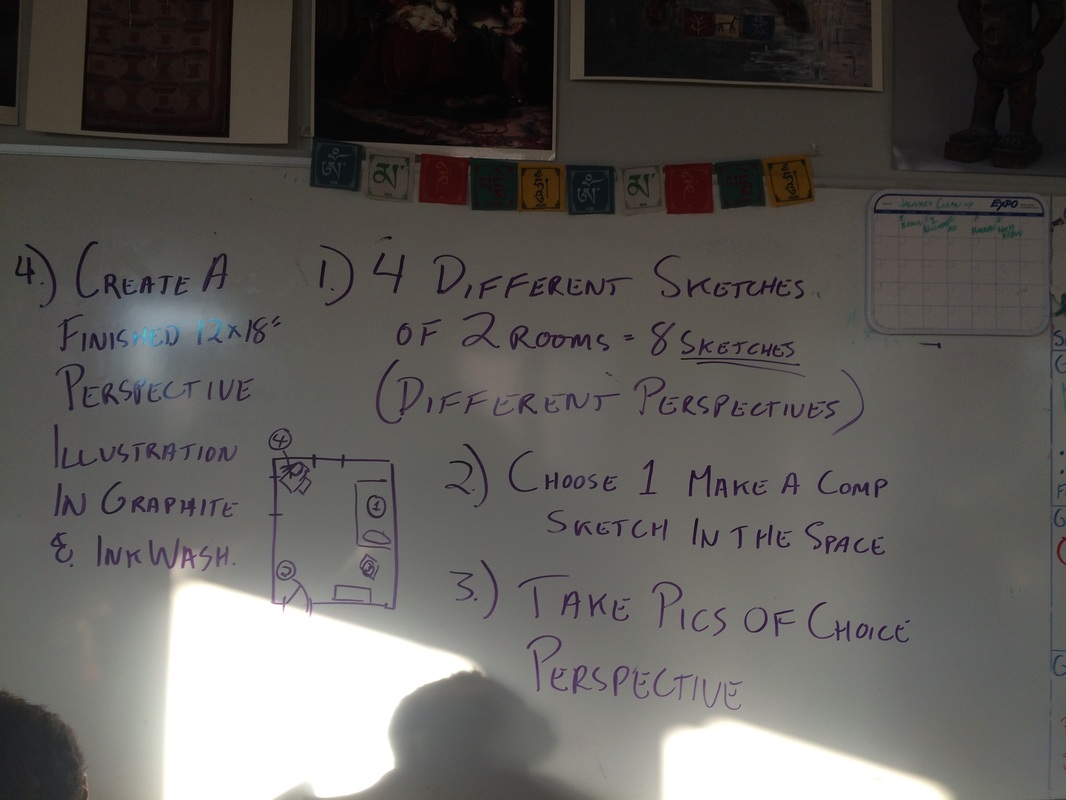Project Description:
Perspective when it comes to the visual realm is not always a matter of, well, perspective. Before visual perspectives and vanishing points can be altered and messed with, one must first learn how they function normally. This Project will explore the various ways to portray perspective on a two-dimensional plane. We will study artworks by M.C. Escher, David Macaulay, Fra Angelico, Raphael, Andrea Mantegna, and Salvador Dali.
Essential Questions: What is perspective? What do you consider correct perspective? Where should we look for examples of perspective in the real world? How could someone deliberately mess with perspective?
Activity 1: Research the difference between Salvador Dali's Christ of Saint John of the Cross (one point perspective) and Corpus Hypercubus (two-point perspective) Compare these two paintings to Andrea Mantegna's Lamentation of Christ answering the following questions: How are the three works different? How are the three works similar? What is the artist trying to convey with these perspectives?
Activity 2: Looking at Fra Angelico's Annunciation, identify the vanishing point. Using the perspective that he used, sketch roughly of the interior of your bedroom. Using these sketches, try to assemble in a finished study, the vanishing point(s) of your own room.
Activity 3: One of the most famous examples of perspective in a painting is Raphael's School of Athens. Taking a look at this fresco, observe the care he has taken in the floor and ceiling when applying one point perspective. Sitting in one of the halls in the school, draw the one point perspective of that space. How could you apply this to another area like a street or alleyway?
Activity 4: Watch the attached link to David Macaulay's Rome. Taking the lessons from Macauley's experience, is there anywhere that you find in your life that you are propelled to draw and study? Exploring on your own, find an exterior example of single or two point perspective. Sketch it and take photos to further your study as you develop an 11" x 17" perspective drawing of that area. Like Macaulay, write a short (one paragraph) story about your connection to this place. Incorporate this story into your reflection (follow graphic organizer below.
Perspective when it comes to the visual realm is not always a matter of, well, perspective. Before visual perspectives and vanishing points can be altered and messed with, one must first learn how they function normally. This Project will explore the various ways to portray perspective on a two-dimensional plane. We will study artworks by M.C. Escher, David Macaulay, Fra Angelico, Raphael, Andrea Mantegna, and Salvador Dali.
Essential Questions: What is perspective? What do you consider correct perspective? Where should we look for examples of perspective in the real world? How could someone deliberately mess with perspective?
Activity 1: Research the difference between Salvador Dali's Christ of Saint John of the Cross (one point perspective) and Corpus Hypercubus (two-point perspective) Compare these two paintings to Andrea Mantegna's Lamentation of Christ answering the following questions: How are the three works different? How are the three works similar? What is the artist trying to convey with these perspectives?
Activity 2: Looking at Fra Angelico's Annunciation, identify the vanishing point. Using the perspective that he used, sketch roughly of the interior of your bedroom. Using these sketches, try to assemble in a finished study, the vanishing point(s) of your own room.
Activity 3: One of the most famous examples of perspective in a painting is Raphael's School of Athens. Taking a look at this fresco, observe the care he has taken in the floor and ceiling when applying one point perspective. Sitting in one of the halls in the school, draw the one point perspective of that space. How could you apply this to another area like a street or alleyway?
Activity 4: Watch the attached link to David Macaulay's Rome. Taking the lessons from Macauley's experience, is there anywhere that you find in your life that you are propelled to draw and study? Exploring on your own, find an exterior example of single or two point perspective. Sketch it and take photos to further your study as you develop an 11" x 17" perspective drawing of that area. Like Macaulay, write a short (one paragraph) story about your connection to this place. Incorporate this story into your reflection (follow graphic organizer below.
| reflection_visual.docx | |
| File Size: | 121 kb |
| File Type: | docx |

